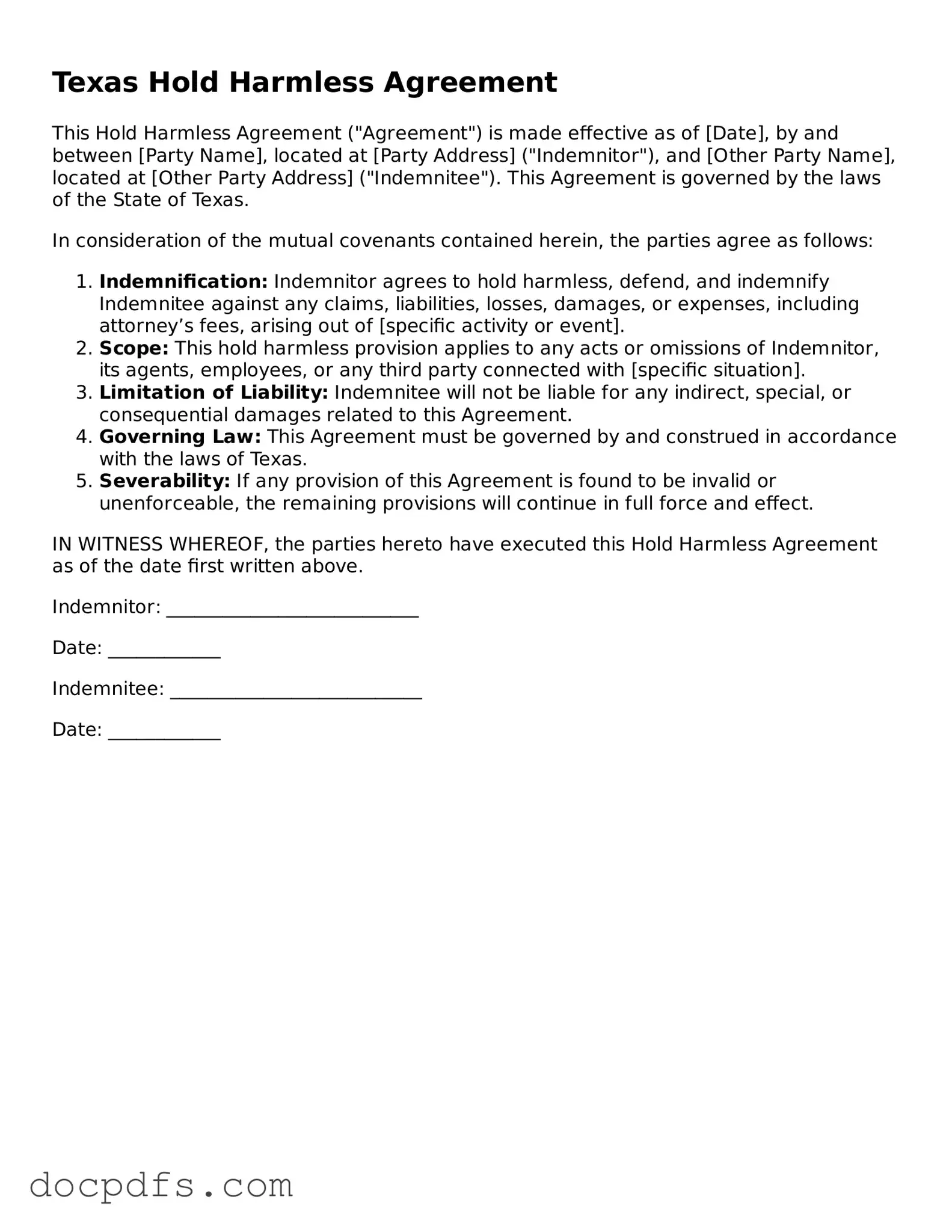What is a Texas Hold Harmless Agreement?
A Texas Hold Harmless Agreement is a legal document designed to protect one party from liability for any damages or injuries that may occur during a specific activity or event. Typically used in various contexts such as construction, events, or rental agreements, this form ensures that one party agrees not to hold the other responsible for certain risks. The agreement outlines the responsibilities of each party and clarifies the extent of the liability waiver.
Who should use a Hold Harmless Agreement?
Any individual or organization that wishes to limit their liability during an activity or event may find a Hold Harmless Agreement beneficial. Common users include:
-
Contractors and subcontractors in the construction industry.
-
Event organizers hosting public or private gatherings.
-
Property owners renting out facilities or spaces.
-
Participants in recreational activities, such as sports or outdoor events.
In essence, anyone engaging in activities that may expose them to potential legal claims should consider using this agreement.
What are the key components of a Hold Harmless Agreement?
A comprehensive Hold Harmless Agreement typically includes several important components:
-
Identification of Parties:
Clearly states the names and roles of the parties involved.
-
Description of Activities:
Outlines the specific activities or events for which the agreement applies.
-
Liability Waiver:
Details the extent to which one party agrees to waive their right to hold the other party liable.
-
Indemnification Clause:
Specifies that one party will cover any legal costs or damages incurred by the other party.
-
Governing Law:
Indicates which state’s laws will govern the agreement.
Is a Hold Harmless Agreement legally binding?
Yes, a Hold Harmless Agreement is legally binding, provided it meets certain conditions. For the agreement to be enforceable, it must be clear, concise, and voluntarily signed by all parties involved. Additionally, it should not violate public policy or contain any illegal provisions. While it can protect against liability, it is essential to consult with a legal professional to ensure that the agreement is appropriately drafted and tailored to your specific needs.
Can a Hold Harmless Agreement be revoked?
In general, a Hold Harmless Agreement cannot be revoked unilaterally once it has been signed. However, both parties may mutually agree to terminate or modify the agreement, provided they do so in writing. It is important to document any changes to ensure clarity and prevent future disputes. If circumstances change significantly, it may be wise to consult a legal professional for guidance on how to proceed.
How do I create a Texas Hold Harmless Agreement?
Creating a Texas Hold Harmless Agreement involves several steps:
-
Identify the Parties:
Clearly define who is involved in the agreement.
-
Outline the Activities:
Specify the activities or events covered by the agreement.
-
Draft the Agreement:
Include all necessary components, such as the liability waiver and indemnification clause.
-
Review:
Have all parties review the document to ensure mutual understanding.
-
Sign and Date:
Ensure that all parties sign and date the agreement to make it official.
While templates are available online, it is advisable to seek legal counsel to ensure that the agreement is compliant with Texas laws and adequately protects your interests.
